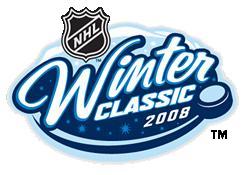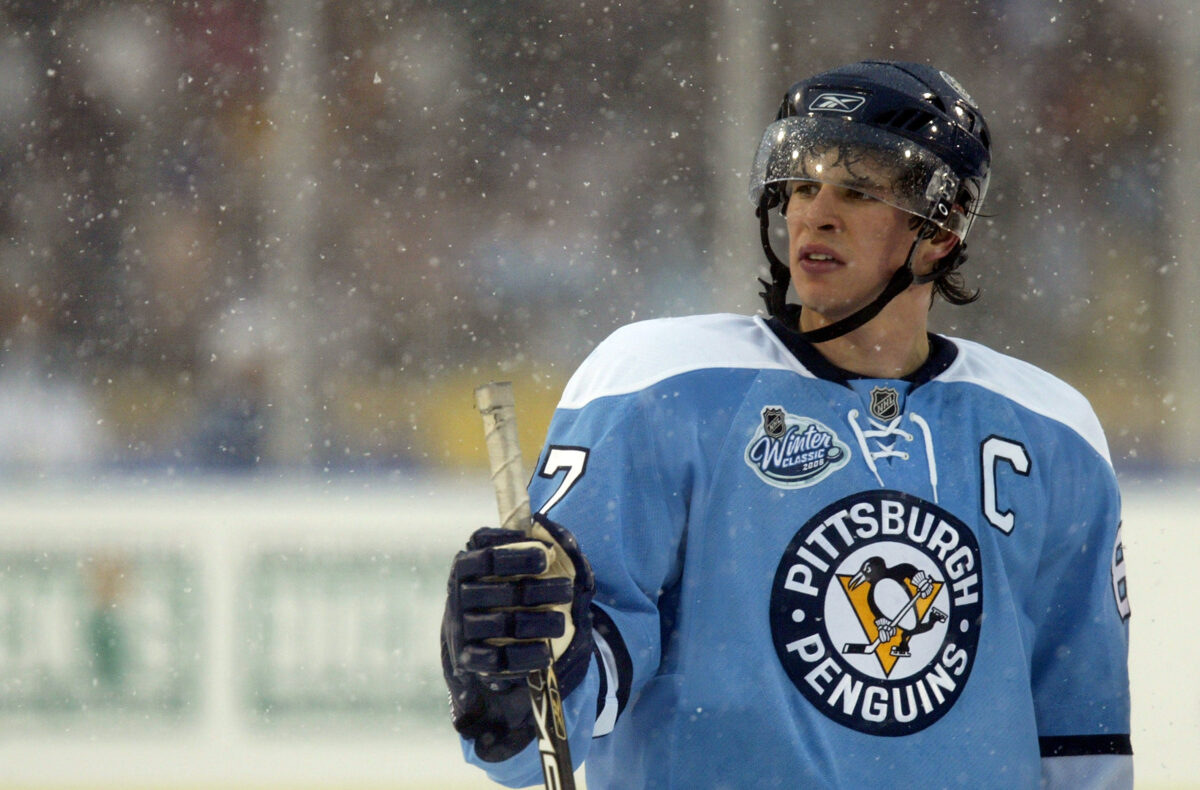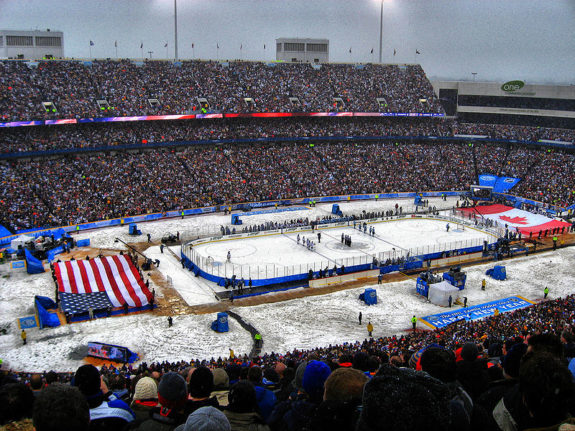New Year’s Day has always been a joyous annual occasion for citizens of the world to come together and celebrate the milestone of simply making it one more year. For hockey fans, this means the regular season is about to ramp up for full-throttle playoff races. In 2008, the NHL bestowed upon fans a New Year’s gift that’s still giving to this day: The Winter Classic.

Prior to 2008, the NHL had only hosted a singular outdoor game: The 2003 Heritage Classic between the Montreal Canadiens and Edmonton Oilers, played at Commonwealth Stadium in Edmonton on November 23, 2003. Over 57,000 die-hard fans gathered in subzero temperatures to watch a matchup for-the-ages, which saw the Canadiens victorious over the Oilers, 4-3.
Penguins, Sabres Set The Stage For History
The NHL’s production of an outdoor game was met with overwhelmingly positive feedback, accompanied by fans hungry for more barnburners away from the confines of modern hockey arenas. The masses were finally fed in 2008 when the NHL hosted its second outdoor game ever with the institution of a new annual event, titled the “Winter Classic.” At the beginning of each calendar year, the league planned to produce one outdoor game on New Year’s Day. For the inaugural edition of the Winter Classic, the Pittsburgh Penguins traveled to Buffalo to play the host Sabres at Ralph Wilson Stadium (now Highmark Stadium), home of the NFL’s Buffalo Bills.
Related: Pittsburgh Penguins and Canucks Trade Could Provide 2022 Deadline Blockbuster
Much to the likes of today’s competitive NHL hierarchy, the Penguins were the favorite to secure a win over Buffalo. The Sabres’ roster at the time was far from complete, as their mediocre 90-point season seemingly fell short of a playoff slot. Buffalo was carried by the young core of budding talents Derek Roy, Jason Pominville, and Thomas Vanek. Now-retired goaltender Ryan Miller had just began to find his form, despite allowing a league-high 197 goals-against during the 2008 NHL campaign. The Penguins were a different story, to say the least.

By January of 2008, “Sid the Kid” and the flightless birds were playing hockey on an unprecedented level. The now-veteran unit of Sidney Crosby, Evgeni Malkin, and Kris Letang had began their devastation of the NHL, leading the Penguins to a 102-point first-place finish in the Atlantic Division (since dissolved). The high-flying youngsters of Pittsburgh felt a little less weight on their shoulders with proficient contributions from defensemen Sergei Gonchar and Ryan Whitney as well as blossoming star-netminder Marc-Andre Fleury.
Armstrong And Campbell Start The Show
On New Year’s Day in 2008, the hockey world marveled at a never-seen-before sight: An NFL-size football stadium filled with screaming hockey fans as snow began to fall. For the first time, over 70,000 people were in attendance for an NHL game, making it then the most-attended NHL match of all time.
See Also: How Much Have The Buffalo Sabres Actually Improved?
Merely 21 seconds after puck drop, Colby Armstrong lit the lamp to give the Penguins an early 1-0 lead. The score came as a result of Crosby’s athleticism. Barreling down the left-side of the rink to start an aggressive forecheck, Crosby skated wide of the net and suddenly cut in to find a hole in Miller’s pads. Crosby’s attempt to pull Miller out of place caused a slight collision with defenseman Brian Campbell, allowing Armstrong to easily rip the puck glove-side. For the remainder of the period, scoring was extinct.

After Armstrong’s quick statement to seal the first period, Buffalo was eager to open its own scoring. The second period remained scoreless for less than a minute-and-a-half before the Sabres took over. Centerman Tim Connolly skated in on the left-side of the net with the puck, attempting to slow the play during a lightning-fast breakout. Connolly slammed on the breaks as he saw Campbell undefended in front of the net, and fed him a tape-to-tape pass resulting in a one-timed rocket past Penguins goalie Ty Conklin. Ralph Wilson Stadium erupted as the lifelong Sabres fans watched their team even the wintry game in glorious fashion.
Sidney Crosby: Shootout Savior
Although the Sabres dominated the second and third periods, 60 minutes was simply not enough time to decide this one. The two squads trudged in and out of overtime without netting a winner, but Buffalo still maintained possession and control. A gritty and scoreless five-minute period of extra time warranted the most nail-biting scenario in hockey: the shootout. Seventy-thousand human beings stood still as the fate of this historical day rode on the weight of one moment.
Related: Rust’s Contract Status Is To Penguins What Hyman’s Was to Maple Leafs
The Sabres, as the hosting squad, elected to shoot first. Buffalo sent out Ales Kotalik, whose calm and collective approach to Conklin gave the Sabres an immediate leg-up to begin the shootout. Following Kotalik’s immeasurable tally, the next two shooters (Pittsburgh’s Erik Christensen and Buffalo’s Connolly) resulted in a miss and a save. Sending out young-gun defenseman Letang, Pittsburgh head coach Michel Therrien and the rest of the team were sweating profusely.
In an epic drive to even the tide, Letang zoomed in on Miller, deking from the forehand to the backhand, subsequently flipping the puck by Miller’s head into the net. Buffalo’s next shooter, Maxim Afinogenov, failed to put his team ahead which prompted Therrien to send Crosby to center ice as his next shooter. With the game on his stick, Crosby put the weight of Pittsburgh on his back and his slick hands to use. Furiously funneling together a series of lightning-fast dekes in Miller’s immediate space, Crosby casually slid the puck under the pads and silenced a professional football stadium full of fans.
Legacy of The 2008 Edition
Since that snowy day in Buffalo on Jan. 1, 2008, the NHL has hosted the Winter Classic 13 times as a bigger part of 32 outdoor games. Commissioner Gary Bettman is largely in favor of these outdoor events, but also understands that their rarity is what makes them special. Henceforth, the inaugural NHL Winter Classic was a resounding success that paved the way for outdoor NHL events for years to come. To this day, the 2008 Winter Classic remains regarded as the best outdoor hockey game of all-time.
